Long Questions With Answers - Biomechanics and Sports | Physical Education Class 12(XII) - Notes & Model Test Papers - Humanities/Arts PDF Download
Q.1. What is projectile? Explain the factors affecting the projectile trajectory
Or
Write in brief that how the angle of projection, the height of release speed of release, gravity and air resistance affect projectile trajectory.
Ans. An object thrown into space either horizontally or an acute angle under the action of gravity is called a projectile. There are forces which act on a projectile-gravitational force and air two resistance. Air resistance of an object varies greatly and it depends on the object’s particular shape and the atmospheric conditions in which the object is released.
Projectile - The path followed by a projectile.
The factor affecting Projectile Trajectory are mentioned below.
1. Angle of projection:- An object which is projected at different angles covers a different distance. When it is projected or released at angle of 25O, making it a parabolic path and coves lesser distance. When it is released at angle of 42O & 45O, makes a parabolic path and covers. Maximum distance. So the distance covered by an object (Shot Put, Hammer, Javelin, Discus etc.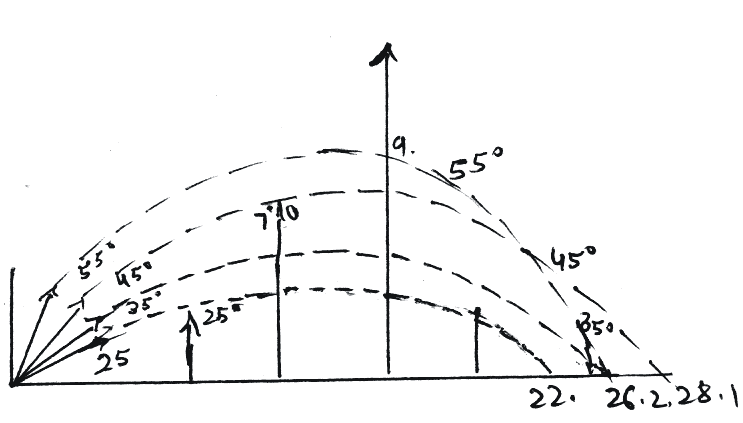
2. Projection height relevant to the landing surface:- If the projection height and landing surface are equal the thing should be release/thrown at an angle of 42O to 45O it cover maximum distance.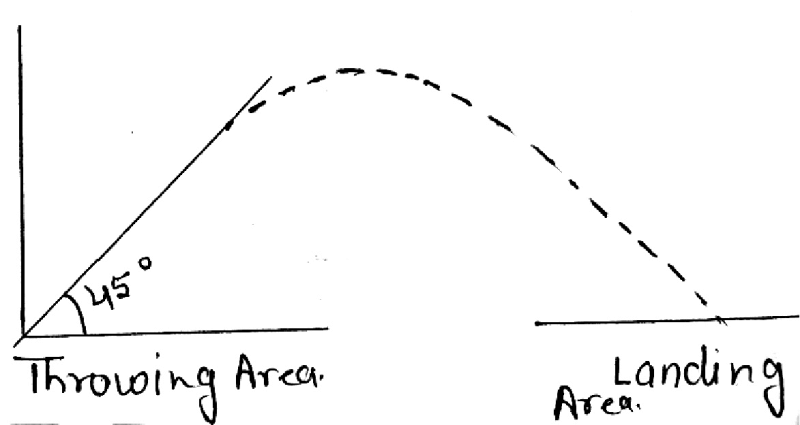
If the level of landing surface is more than projection height the angle shall be increased i.e. should be more than 45O. So thing are cover a maximum distance.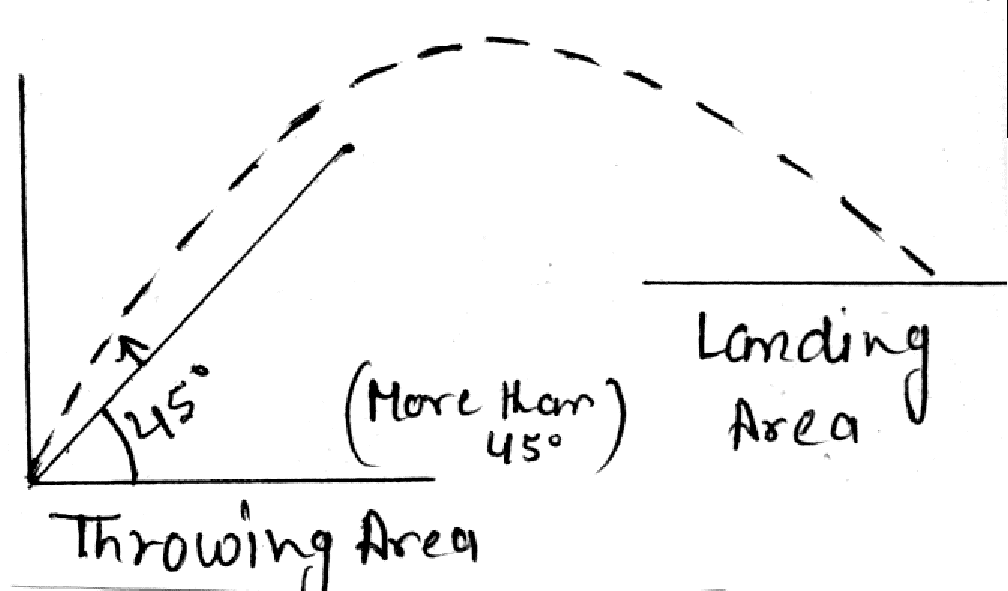
If the level of Landing surface is less than projection height the angle of projection should be decreased. I.e. should be less the 450. The things are cover maximum distance. So the distance of horizontal depends upon the relevancy of projection height and landing surface.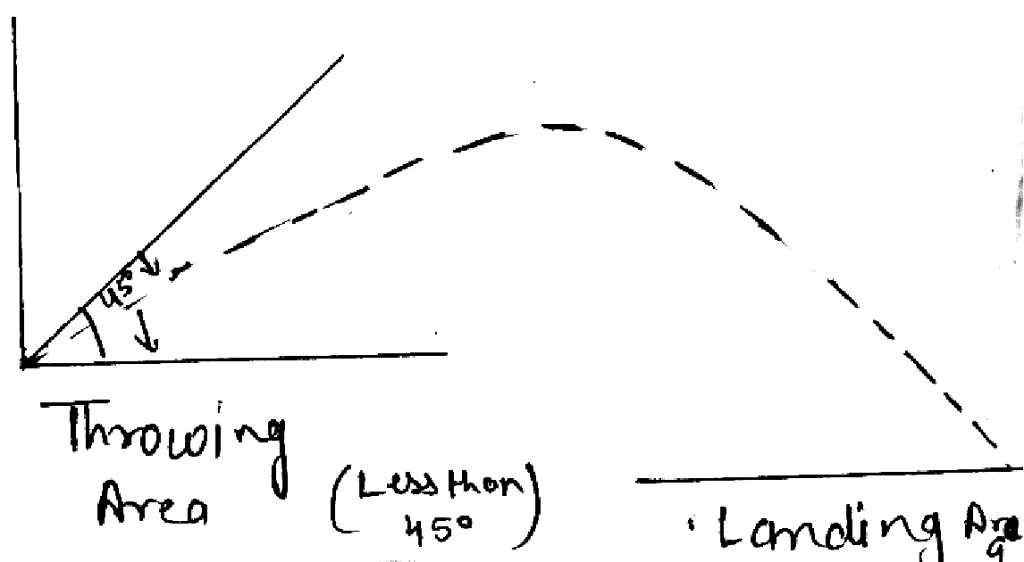
3. Initial velocity:- The distance covered by an object depends on the initial velocity of the projectile. If the initial velocity is more, the object covers maximum distance. And if the initial velocity is less the object covers less distance.
4. Gravity:- It is the force of attraction exerted by the earth towards the objects. A Leaner object, if projected will have longer elevation in comparison to a lightweight object with the same force. Gravity affects a projectile as it decreases the height of the force of gravity acts on the object to stop its upward movement and pulls it back to earth. Limiting the vertical component of the projectile.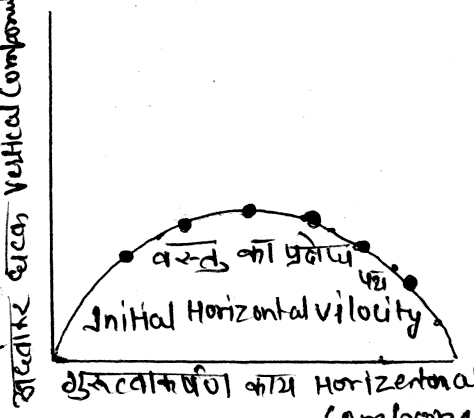
5. Air Resistance:- When a projectile moves through the air, it is slowed down by air resistance, Air resistance decrease the horizontal component of the projectile. The effect of air resistance is very small but it increase the horizontal component of air resistance acting on a projectile mass surface of the object. Following factors - Surface of the object volume, mass & speed related to the amount of air resistance of a projectile.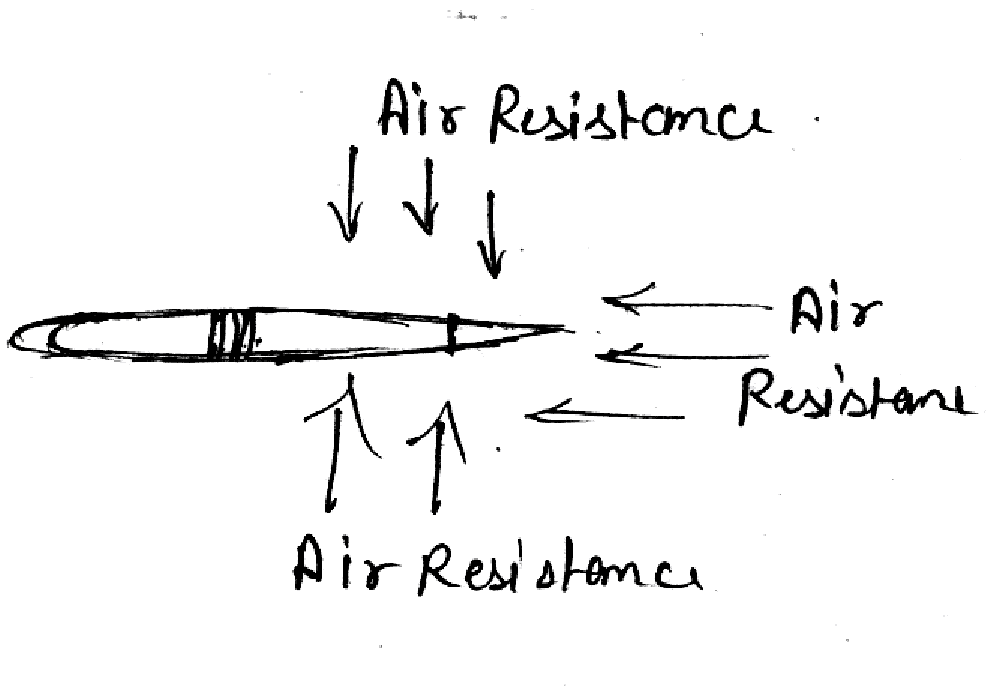
6. Spin:- The amount and direction of spin acting on a projectile Vertical components Horizontal Vertical Resistance Air Resistance will directly affect the distance traveled or covered by a projectile. The main reason behind this fact is the air pressure acting on the object. -
Upper air pressure is maximum on the object. -
Lower air pressure is maximum on the object.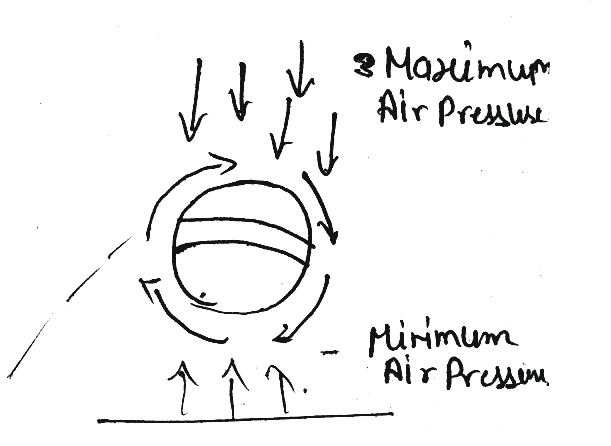
Q.2 Discuss the mechanical analysis of walking in details?
Or
With the help of mechanical analysis of walking, state how it can enhance or develop the performance of an athlete? Explain the phases of mechanical analysis of walking?
Ans. The mechanical analysis of walking helps to improve the techniques of players and it also instruments for better performance.
1. Mechanical Analysis of Walking divided into two phases:- Stance phase is the Period, when the foot is on the ground. It is considered that it consists of maximum percentage of walking cycle. For the part of stance phase. Both the feet have a contact with the ground for a period of time. The stance phase of walking is divided into five stages.
* Heel strike:- This stage begins when the feet first touche the ground and continue until the complete foot is on the ground i.e. early flat foot stage.
* Early Flat Foot:- The starting of this stage is that movement when the complete foot is on the ground and early flat foot stage occurs when the body’s center of gravity passes over the top of the foot. The center of gravity of the body is located approx. in the pelvic area of the lower spine while walking. The main purpose of this stage is to allow the foot to act as a shock absorber.
* Late Flat Foot:- An athlete comes into late flat foot stage when his body’s centre of gravity passes in front of ‘neutral’ position. This stage lasts when the heel lifts of the ground. During this stage the foot needs to go from being a shock absorber to being a rigid lever which can help to people the body in forward direction.
* Heel Rise:- This stage starts when the heel begins to leaves the ground. The foot functions are a rigid lever to move the body in forward direction. During this stage of walking, the ground forces that go through the foot are very significant.
Toe-off: - When the toes leave the ground completely. This stage continues until the beginning of swing phase.
2. Swing Phase:- It occurs when one foot is on the ground and other one is in the air swing phase in walking is than the stance phase. It is divided into three phase.
* Initial swings:- This phase sees the hip extended to 10O and then going onto flexion and knee flexed to 40-60O and the Ankle changing it’s position from the flexion to neutral.
* Mid Swing:- This phase see the hip extended to 30O the knee flexion till 60O and extended approx to 30O and ankle become dorsiflexed.
* Terminal Swing:- This phase is the hip flexed till 30O and knee is locked extension and foot changes its position from dorsiflexed to neutral.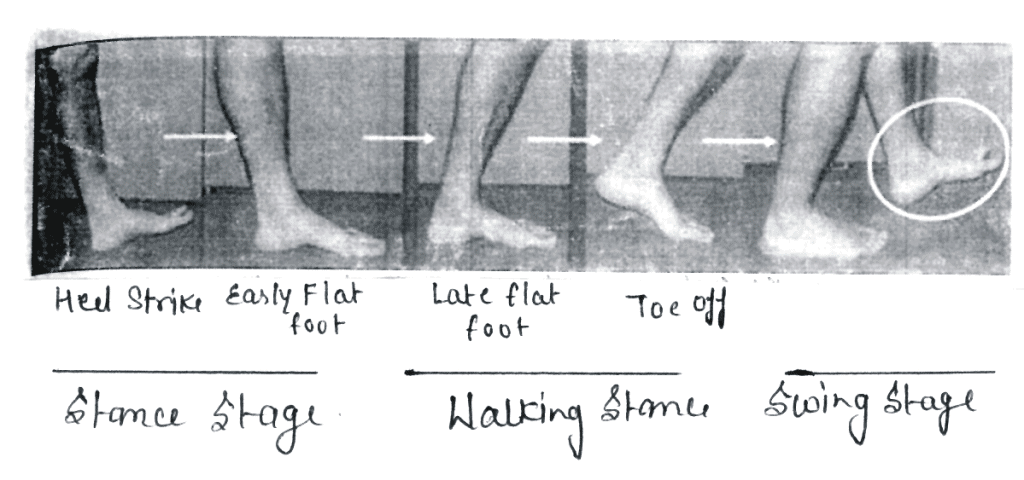 Q.3 What are the different phase of running cycle?
Q.3 What are the different phase of running cycle?
Ans:- Running as an essential part of living beings. Running is important in sports also. A good runner will not only be able to defeat it’s opponents in running, but would also be able to gain very good takeoff velocity that would help to take a higher or longer jump. Different phases of running are mentioned below.
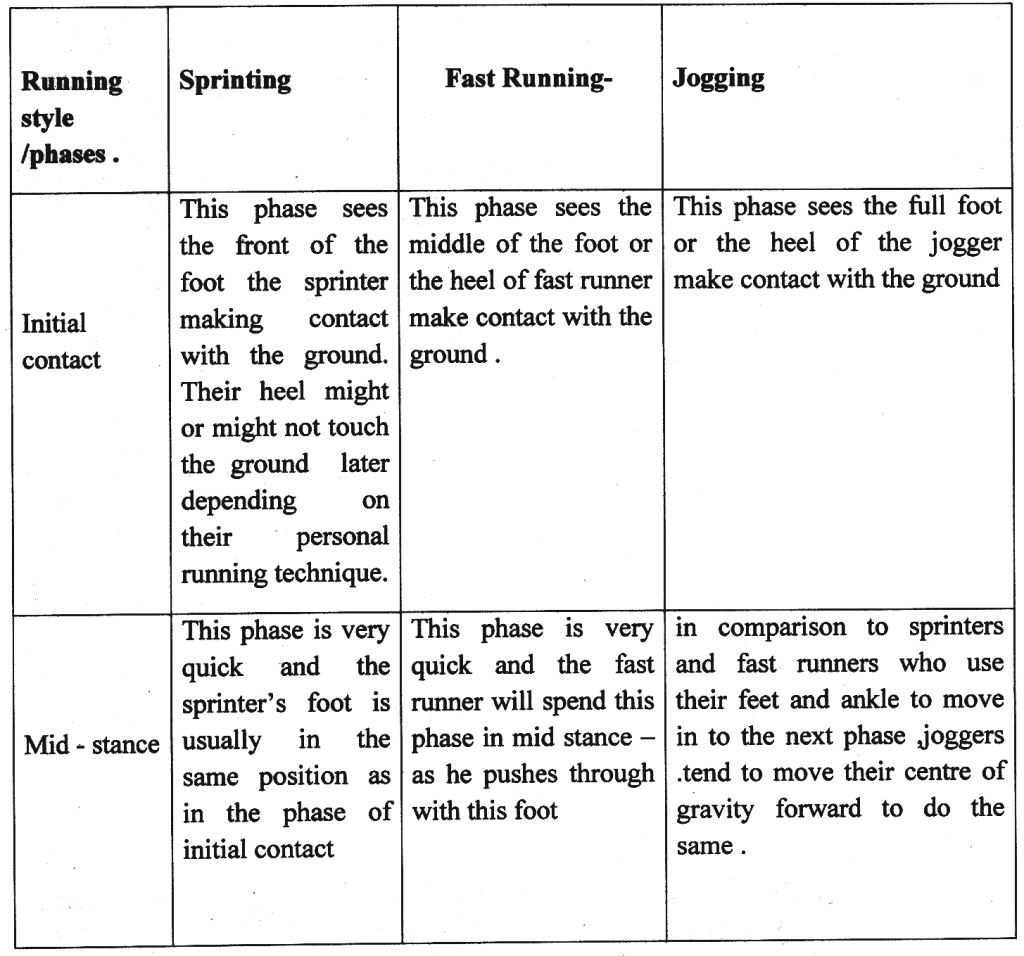

Upper body & Arm mechanics in Running - The upper body action provides balance & promotes efficient movement. The balance is maintained by the arm & upper body effectively working in the direct opposition to the legs. The arm & upper body produces a propulsive force during absorption stage. The arm & upper body also counterbalance in mid-section.
|
12 videos|68 docs|31 tests
|
FAQs on Long Questions With Answers - Biomechanics and Sports - Physical Education Class 12(XII) - Notes & Model Test Papers - Humanities/Arts
| 1. What is biomechanics and how does it relate to sports? |  |
| 2. How does biomechanics contribute to sports performance analysis? |  |
| 3. What are some examples of biomechanical principles applied in sports? |  |
| 4. How does understanding biomechanics help in preventing sports injuries? |  |
| 5. What role does biomechanics play in designing sports equipment? |  |
|
12 videos|68 docs|31 tests
|

|
Explore Courses for Humanities/Arts exam
|

|

















